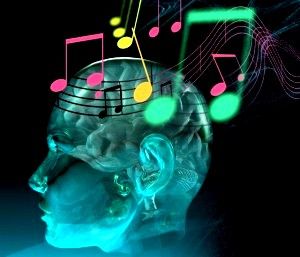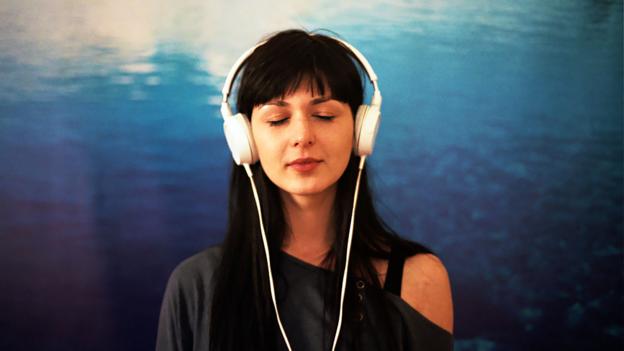With the explosion of music consumption in the past century, the type of music you listen to has become quite an important personality construct of sorts. Whether you’re a hardcore music junkie or a general listener, everyone has a loosely defined ‘taste’ they refer to when it comes to what kind of music they listen to. How is it that you came to like your favorite artists, and what compelled you to listen to them? Do you ever wonder if you’ll still love them in 30, 40 years?
It has commonly been held that music taste is practically sealed by adolescence, but a new study suggests that our music taste continues to change as we get older to meet our social and psychological needs.

First, let’s go over a brief overview of how the average person’s music taste is formulated:
We start forming our music taste at around the age of 10, even if we have no prior interest in music. After that comes the formative window, ages 11 to 17, when self-discovery is in full swing, and we find our impressionable selves reacting dramatically to every new piece of music we hear. With 14 being a magic age for the development of music preferences, our cognitive development makes it so that music taste become a vital part of our identity.
Dr. Jason Rentfrow, a senior lecturer at the University of Cambridge, says, “Teenage years are often dominated by the need to explain identity, and music is a cheap, effective way to do this.” I’m sure we can all relate do this in some form. Think about the number of times you’ve ever dropped the name of a certain band or artist in the bio of your social media account. Or alternatively, have you ever listened to an artist for the sake of impressing that one guy or girl you like?
It is commonly thought that our music tastes are essentially solidified by our late teens or early twenties. That isn’t to say you can’t be turned on to some crazy new genre after this point, but our basic music preferences are there and laid out for us, according to scientists. It’s when we find our footing and direction in terms of what we’ll listen to in the future. For example, think about the type of music that you listened to when you were 14. It’s not that much different than what you’re into now, right? A little less sophisticated, certainly, but the basic genres that you liked back then you probably still like now. If you were into really moody and depressing sad sack artists, your music library now might contain even more moody and depressing music in an abundance of genres and styles. If you were a hip-hop-head at 14, chances are you still really like hip-hop, even if the stuff you’re into now is more cerebral and complex in comparison. Daniel Levitin, author of This Is Your Brain on Music: The Science of a Human Obsession, explains the importance of the adolescent period in your music taste:
“Most of us base our adult musical tastes on what we liked when we were twelve to sixteen. In some cases, through effort, we can expand our musical tastes as adults. But if we had relatively narrow tastes in our developing years, this is more difficult to do because we lack the appropriate schemas, or templates, with which to process and ultimately to understand new musical forms.”
So if we rely on the basic schemas, or templates, that we have accumulated over the past few years, do we become less open-minded and less malleable with age as we process new music forms? If you think about it, it does make sense that the older you get and the more music you’re exposed to, you form a sort of preexisting standard for every new song or artist you listen to.
However, a study led by Jason Rentfrow decidedly opposes this idea and claims that music taste is an ongoing and constantly evolving process. While there has been much academic research to support the claim that music taste is sealed at an early age, Rentfrow was not totally convinced this was the case. To counter the conception that music taste does not radically evolve past adolescence, he conducted a study with Arielle Bonneville-Roussey that suggests that music taste actually changes according to the ‘life challenges’ we face at different stages in our lives. In this study, the researchers divided musical genres into five broad, “empirically derived” categories called the MUSIC model — mellow, unpretentious, sophisticated, intense, and contemporary — and noted the patterns of preference across different age groups using data gathered from more than a quarter of a million people through online forms.

Results found that the youngest subjects in the study gravitated heavily toward “intense” — this includes punk and metal, to name a couple of genres — and “contemporary” (mainstream pop, rap, vocal, etc.) music, which both decreased with age. The high frequency of “intense” lends itself to the adolescents’ need for autonomy, which is one of the key life challenges of this period. As adolescence segues into early adulthood, “intense” gives way to “mellow” — such as electronic and R&B — with “contemporary” remaining popular. Rentfrow states that in this life period, the key life challenge concerns “finding love and being loved – people who appreciate this ‘you’ that has emerged”, and “mellow” reflects the more laid-back attitude people have compared to their teenage years. After going through this stage and reaching middle age, the last musical age emerges, which is marked by higher trends in “sophisticated” – such as jazz and classical – and “unpretentious” – such as folk, country and blues. Researchers write that the prevalence of “sophisticated” is linked to social status and intellect, while “unpretentious” speaks to people’s direct experiences with family, love and loss.
The results of this study seem quite plausible as a general descriptor of one’s musical development, but it certainly isn’t an accurate representation of everyone’s music taste. It might just be that the study only represents the general population’s music taste, as the music taste of more serious music fans may look quite different. If, say, a young music fanatic who is well-versed in a variety of genres continues with his passion throughout his entire lifetime, it is hard to say if in 20 years he will just be starting to appreciate jazz or classical music. For all we know, he might be deep into those genres now. But for all the rest of us, I think our music taste might retain a semblance of the life-stage development model as shown by the study. I predict that in thirty years, when I’ve experienced a bit more of what life has to offer, my music taste might reflect the middle-aged trends in the study and I’ll have a deeper appreciation for calm classical and country-folk music. I have no idea if this will be the case, but regardless, I’m very curious to see how my taste will look at that age.
Do you know of someone older, a parent perhaps, who thinks their taste in music has significantly changed since their teenage years? If you have any stories or thoughts about the study, feel free to share them in the comments.









